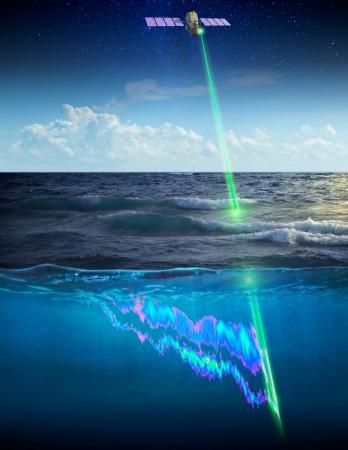
A new study by NASA, using its satellite instrument which orbits Earth, has found that minor alterations in the environment impact the rise and decline of microscopic marine plants phytoplankton.
NASA's OSIRIS-REx: The spacecraft that's protecting us from Trojan asteroids
These revelations can aid us by providing crucial data regarding our ecosystem management and our knowledge regarding the interactions which take place between key ocean ecosystems and Earth's climate, and even about commercial fisheries.
"It's really important for us to understand what controls these boom-and-bust cycles, and how they might change in the future so we can better evaluate the implications on all other parts of the food web," said Michael Behrenfeld, a marine plankton expert at Oregon State University in Corvallis.
A major role is played by phytoplankton in affecting Earth's carbon cycle through the process of photosynthesis. They produce oxygen after taking in huge amounts of carbon dioxide, this process results in reducing CO2 levels from atmosphere.
This study was carried out by researchers from NASA's Langley Research Center in Hampton, Virginia, along with marine plankton expert Behrenfeld and various other institutions.
Phytoplankton in the ocean's food chain impacts the wildlife and the coastal economies. Marine mammals, commercial fisheries and all the birds are dependent on the blooming of these microscopic plants. This new study points toward spike in the growth of phytoplankton which leads to rise in the population of these plants which turns out to be greater than the population of the animals who prey on them.
When the speedy growth of these plants comes to a halt, their predators bring a balance in the population level by preying on the phytoplankton, which stops the bloom.
This new finding proves the old hypothesis wrong, which stated that blooming of the phytoplankton takes place only when their growth rate goes beyond a particular threshold and it comes to a halt when the growth rates falls below that threshold.
This idea was compared to two rubber balls which were linked with the help of a rubber band by Behrenfeld.
"A green ball represents the phytoplankton. A red one represents all the things that eat or kill the phytoplankton. Take the green ball and whack it with a paddle. As long as that green ball accelerates, the rubber band will stretch and the red ball won't catch the green ball. As soon as the green ball stops accelerating, the tension in the rubber band will pull that red ball up to it and the red ball will catch the green ball," Behrenfeld said.
A laser is used to take the measurements by NASA's Cloud-Aerosol LIdar with Orthogonal Polarization (CALIOP), which is an instrument aboard the Cloud-Aerosol Lidar and Infrared Pathfinder Satellite Observation (CALIPSO) satellite that was launched in 2006. The phytoplankton present in the polar regions were continuously monitored from 2006 to 2015 by the scientists using this instrument.
"CALIOP was a game-changer in our thinking about ocean remote sensing from space. We were able to study the workings of the high-latitude ocean ecosystem during times of year when we were previously completely blind," said Chris Hostetler, a research scientist at Langley.
Satellites are used to monitor ocean ecosystems by measuring the sunlight which is reflected to space from the ocean. Persistent clouds and limited sunlight makes the view unclear above the ocean's surface, which create difficulties for these instruments in observing phytoplankton present in the polar region.
The lidar detection system shines its own laser and it can measure the plankton day or night by illuminating through and between the clouds.
"The take home message is that if we want to understand the biological food web and production of the polar systems as a whole, we have to focus both on changes in ice cover and changes in the ecosystems that regulate this delicate balance between predators and prey," Behrenfeld said.









